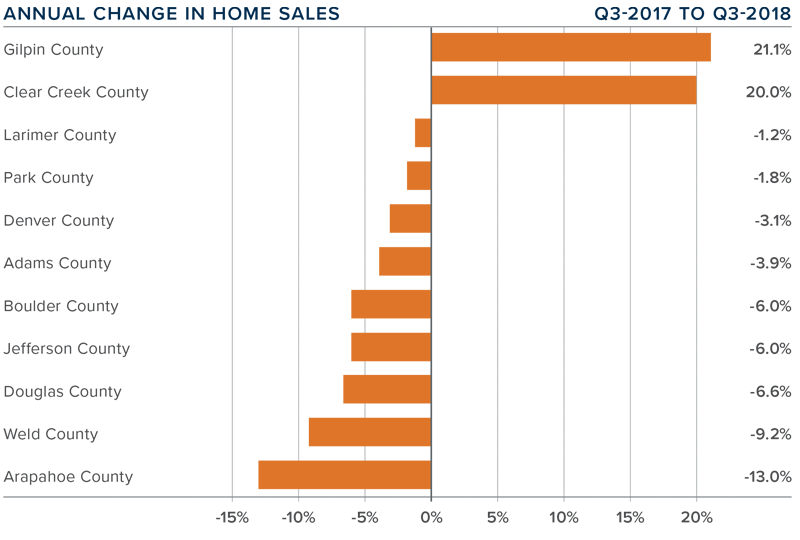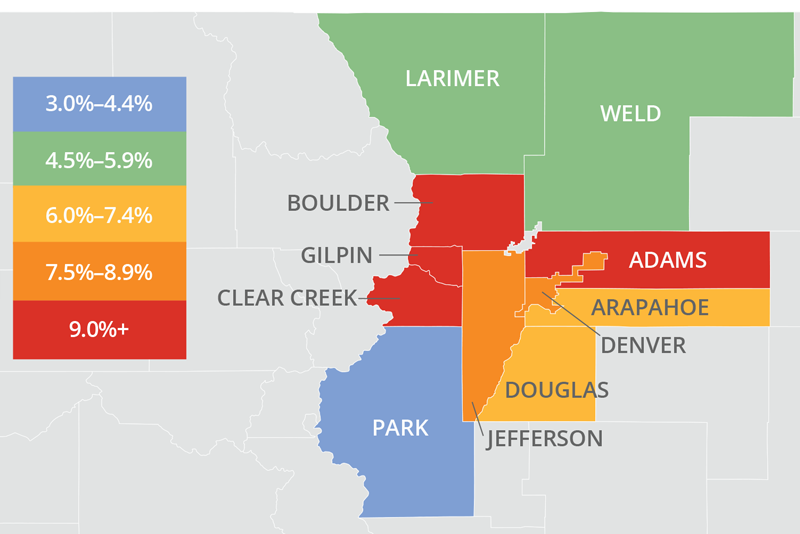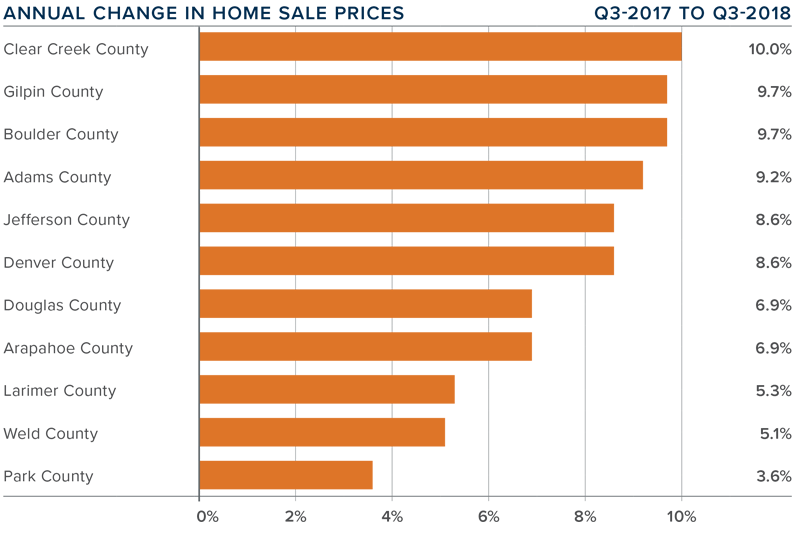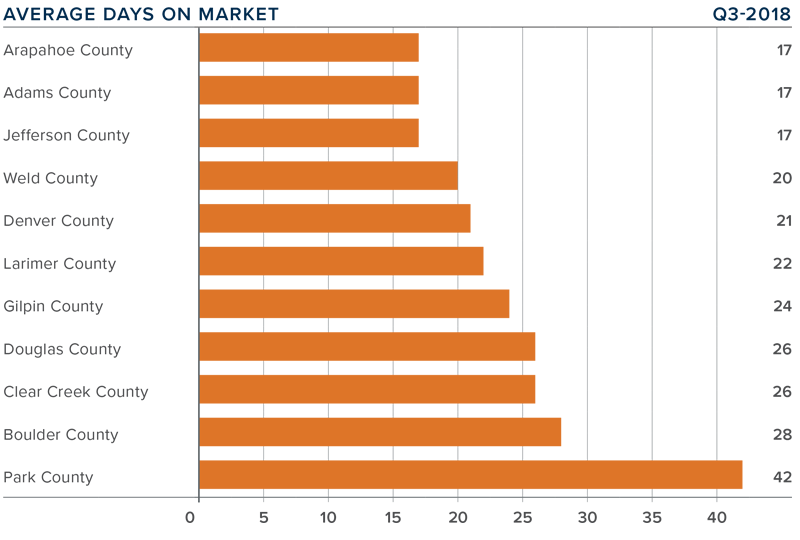The following analysis of the Metro Denver & Northern Colorado real estate market (which now includes Clear Creek, Gilpin, and Park Counties) is provided by Windermere Real Estate Chief Economist Matthew Gardner. We hope that this information may assist you with making better-informed real estate decisions. For further information about the housing market in your area, please don’t hesitate to contact your Windermere agent.
ECONOMIC OVERVIEW
The Colorado economy continues to perform quite well, having added 72,200 non-agricultural jobs over the past 12 months — a solid growth rate of 2.7%. Through the first eight months of 2018, the state has added an average of 6,700 new jobs per month. There has been a modest slowdown in employment gains, but I really don’t think this is a cause for concern and still hold to my forecast that Colorado will add a total of 82,000 new jobs by the end of 2018.
In August, the state unemployment rate was 2.9%. This matches the level seen a year ago. Unemployment rates in all the markets contained in this report rose between August 2017 and August 2018 but this is not actually a concern. Growth in the workforce is not only due to recent college graduates, but also discouraged workers who are starting to look for work again and this puts upward pressure on the unemployment rate. All of Colorado’s metropolitan areas are showing unemployment rates at around 4% or lower, suggesting that the regional economies are at, or close to, full employment.
HOME SALES ACTIVITY
-
In the third quarter of 2018, 16,550 homes sold — a drop of 6.2% compared to the third quarter of 2017.
-
Sales rose in just two of the 11 counties contained in this report. Gilpin County again led the way, with sales rising by an impressive 21.1% compared to third quarter of last year. There was also a significant increase in Clear Creek County. Sales fell the most in Arapahoe County.
-
Slowing sales in the quarter can, to a degree, be attributed to continued home price growth, but I believe it is more a function of the rapid rise in the number of homes for sale. The number of listings in third quarter rose by 5.4% over the same period in 2017, but was up by 31.2% compared to the second quarter of this year.
-
What the numbers are telling us is that inventory growth is giving buyers more choice and they are being far more selective — and patient — before making an offer on a home.

HOME PRICES

-
Even with the rapid rise in listings and slowing home sales, prices continue to trend higher. The average home price in the region rose 7.9% year-over-year to $460,982. However, the average price dropped 4% between second and third quarters.
-
The smallest price gains in the region were in Park County, where prices rose by a fairly modest 3.6%.
-
Appreciation was strongest in Clear Creek County, where prices rose 10%. All other counties in this report saw gains relative to the third quarter of 2017.
-
Affordability is becoming an issue in many Colorado markets and this, in concert with rising inventory levels, has started to dampen home price growth. Although I do not expect prices to drop, I do think price gains will moderate over the next few quarters.

DAYS ON MARKET
-
The average number of days it took to sell a home in Colorado remained at the same level as a year ago.
-
The amount of time it took to sell a home dropped in three counties: Gilpin, Clear Creek, and Larimer. The rest of the counties in this report saw days on market rise by only a couple of days or less.
-
In the third quarter of 2018, it took an average of 24 days to sell a home. It took less than a month to sell a home in all but one county.
-
Housing demand is still solid and, as long as homes are priced appropriately, they will continue to sell in less time than historic averages.

CONCLUSIONS

This speedometer reflects the state of the region’s real estate market using housing inventory, price gains, home sales, interest rates, and larger economic factors.
For the third quarter of 2018, I continue the trend that I started last quarter and have moved the needle a little more in favor of buyers. Listings are likely to continue their rising trend, but we should still see a seasonal drop off during the winter months. The market is clearly headed toward balance, which I am very pleased to see.

Matthew Gardner is the Chief Economist for Windermere Real Estate, specializing in residential market analysis, commercial/industrial market analysis, financial analysis, and land use and regional economics. He is the former Principal of Gardner Economics, and has more than 30 years of professional experience both in the U.S. and U.K.
 Facebook
Facebook
 X
X
 Pinterest
Pinterest
 Copy Link
Copy Link



